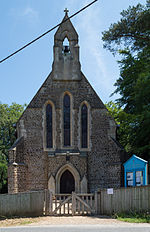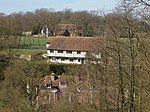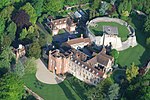Castle Bottom to Yateley and Hawley Commons

Castle Bottom to Yateley and Hawley Commons is a 922.7-hectare (2,280-acre) biological Site of Special Scientific Interest north of Fleet in Hampshire. It is part of Thames Basin Heaths Special Protection Area for the conservation of wild birds and an area of 30.8 hectares (76 acres) is designated a national nature reserve called Castle Bottom.This site of heathland and conifer plantation has an internationally important population of Dartford warbler and populations of two other protected birds, woodlark and nightjar. It also has an outstanding assemblage of dragonflies and damselflies, with 19 out of the 37 British species. Other invertebrates include the nationally rare conopid fly, Myopa fasciata.
Excerpt from the Wikipedia article Castle Bottom to Yateley and Hawley Commons (License: CC BY-SA 3.0, Authors, Images).Castle Bottom to Yateley and Hawley Commons
Heath Lane, Hart Ewshot
Geographical coordinates (GPS) Address Nearby Places Show on map
Geographical coordinates (GPS)
| Latitude | Longitude |
|---|---|
| N 51.231 ° | E -0.828 ° |
Address
Heath Lane
GU10 5AP Hart, Ewshot
England, United Kingdom
Open on Google Maps









